Exploring Tactility in Our Holiday Collection
Cody Hudson on His Process of Creating Connection
Before the pandemic, physically and emotionally connecting with others was commonplace—a hug as you depart from coffee with a loved one, holding the door for a stranger even if they’re an extra step away, a handshake that leads to a new friend. We didn’t realize these little gestures holding space in our day-to-day meant so much until they were gone.
We believe it’s time to resurrect the idea of togetherness. Our 2021 Holiday Collection is inspired by the hope of a future filled with true connection. In partnership with Chicago artist Cody Hudson, we explored touch, tactility, and connection with coffee, art, and the holiday season. From Cody:
When I was approached with the idea of infusing connection into this collection, I originally thought of the hands-on way I interact with my art. There’s hand-cutting shapes, hand-painting murals, rolling out textures, arranging and rearranging shapes by hand. It’s the human side of creating art. I often have a hard time explaining my work or getting the words out, because the whole reason I create is to express myself—it’s just visual, instead of verbal. My art—even more so the process of making my art—is communication and connection.

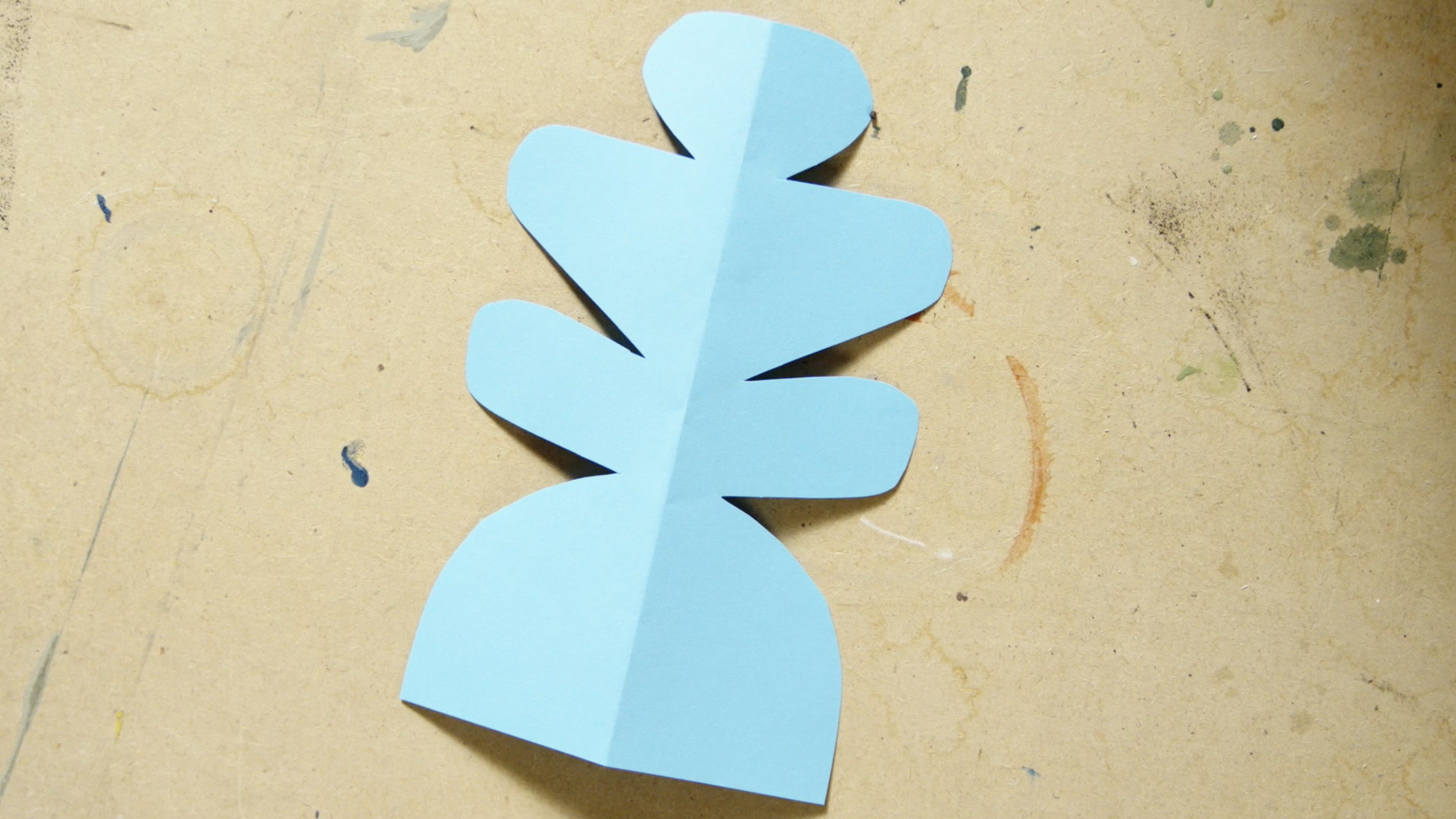
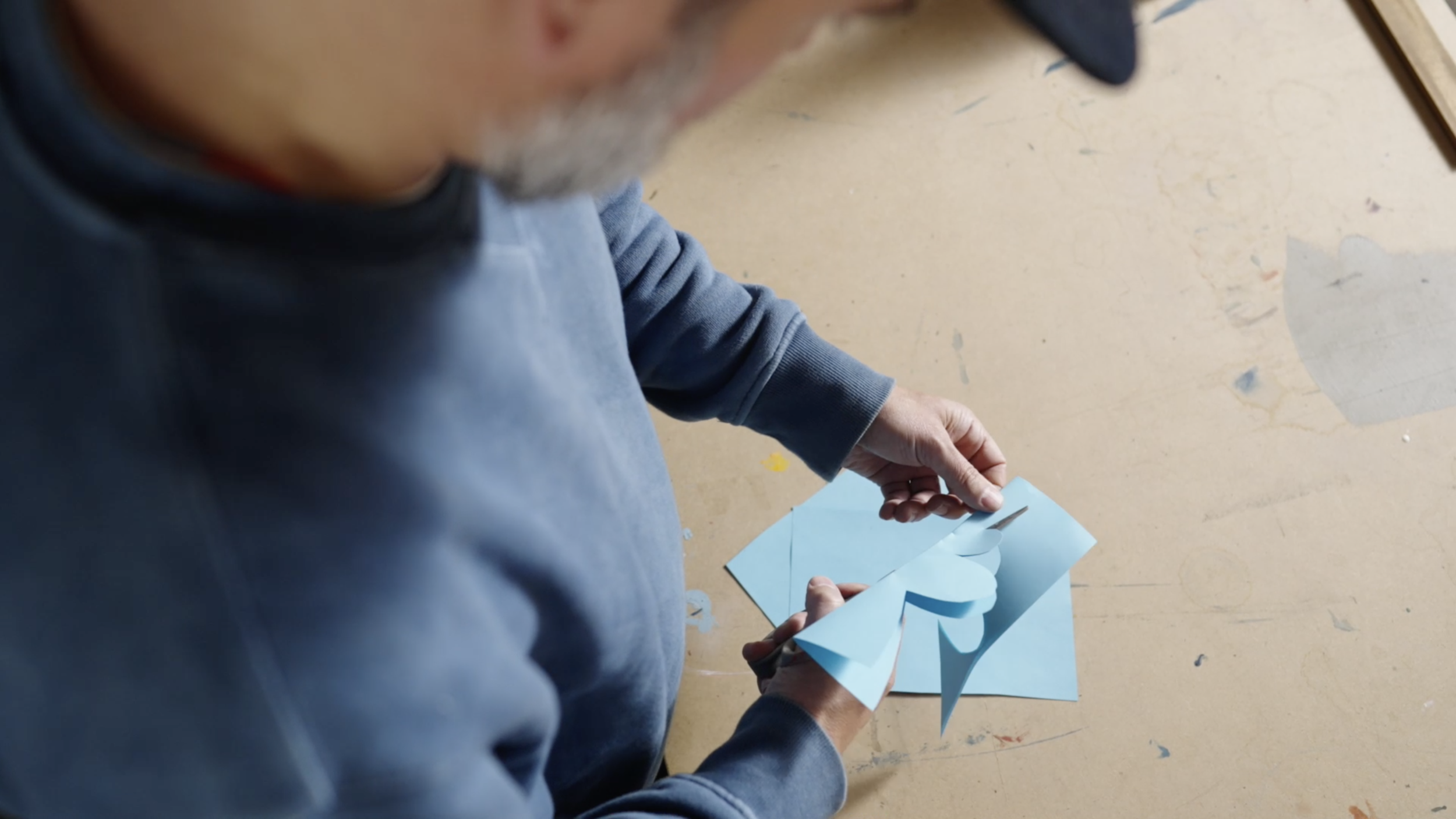
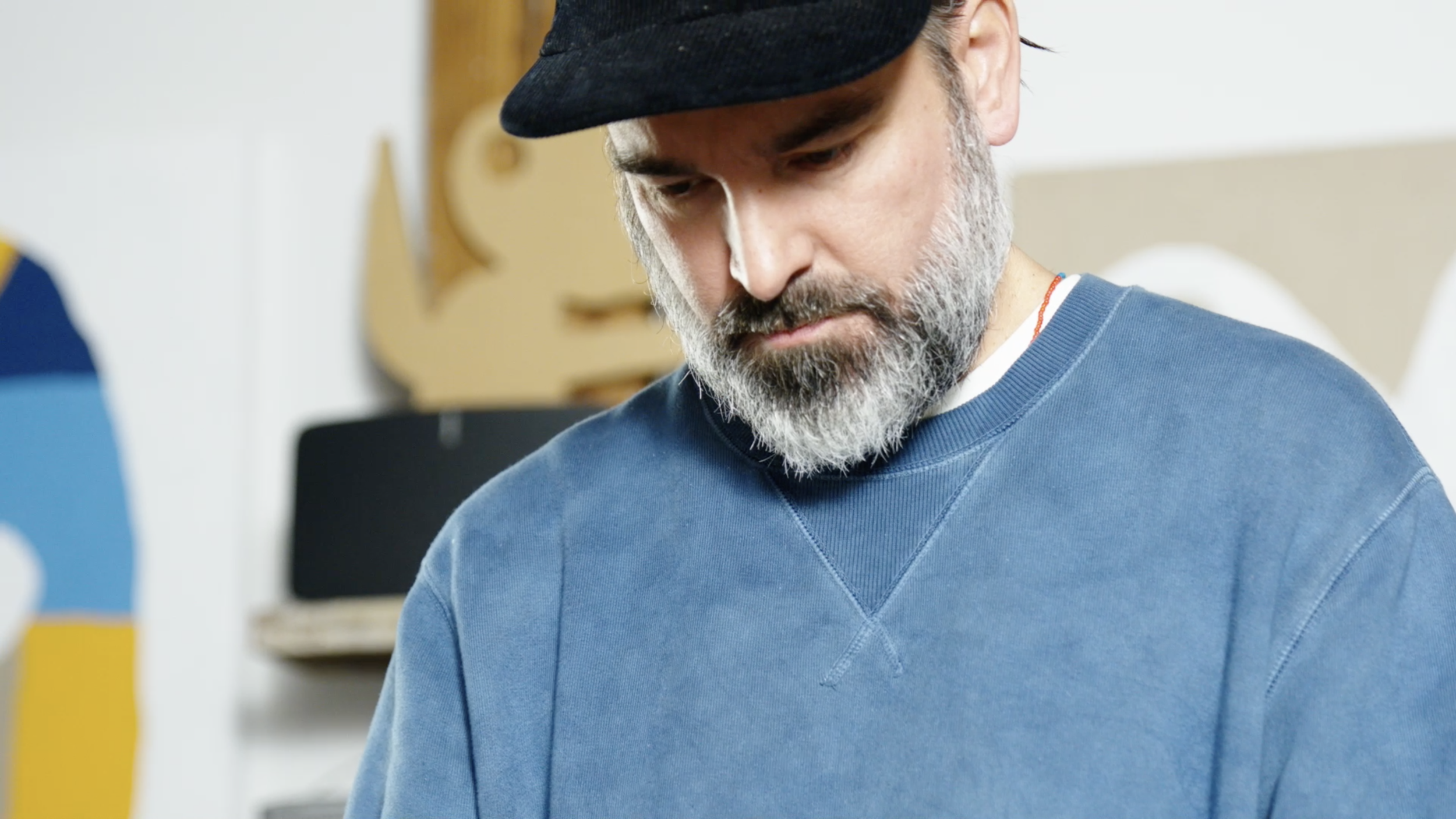
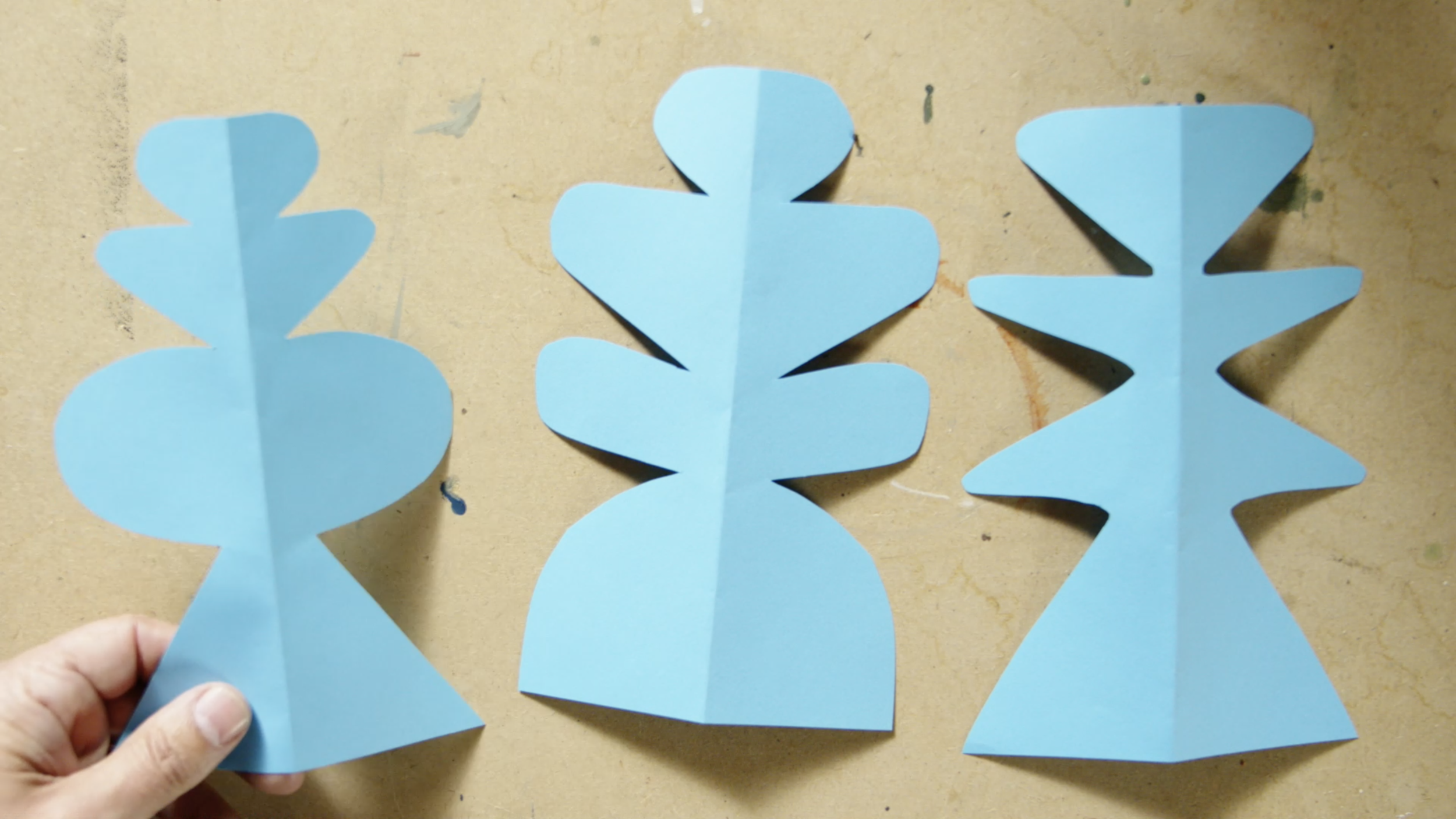
Finding Movement
It starts with movement. Movement in the artist, movement in the pieces, movement down the winding path each piece takes to find its final form. If you want to create something that exudes touch and connection, Cody says you can’t fake it.
I’m just used to doing stuff by hand. There’s a human feel to cutting a piece of paper into a triangle that’s different from drawing it on a computer. It’s more honest. You can feel and see how imperfect it is, how real it is. A human had to touch these pieces to create something bigger. And it carries that sense all the way through till the end.
With the same transcendence and honesty we find in a thoughtfully made pour over, Cody begins his work with real connection and care. From there, he lets his shapes meet and mingle.
With abstract art, it’s just a collection of shapes that really could mean anything. Some are more interesting when they’re touching and coming together. Some have their own power when they’re separate. The shapes are having a conversation, an interaction. In the beginning, I’m never really sure how they’re communicating, but then I start pushing them around, playing with the feelings and thoughts in my head.
I can have 10 shapes and every rearrangement feels like it’s saying something different. It could conjure a memory for someone and hold a unique meaning for someone else. I’m much more interested in what it means to the viewer than what it means to me. I think there’s a sense of hopefulness in the bold colors and shapes. On a rudimentary level, I hope these simple shapes just brighten someone’s day or change their mood.
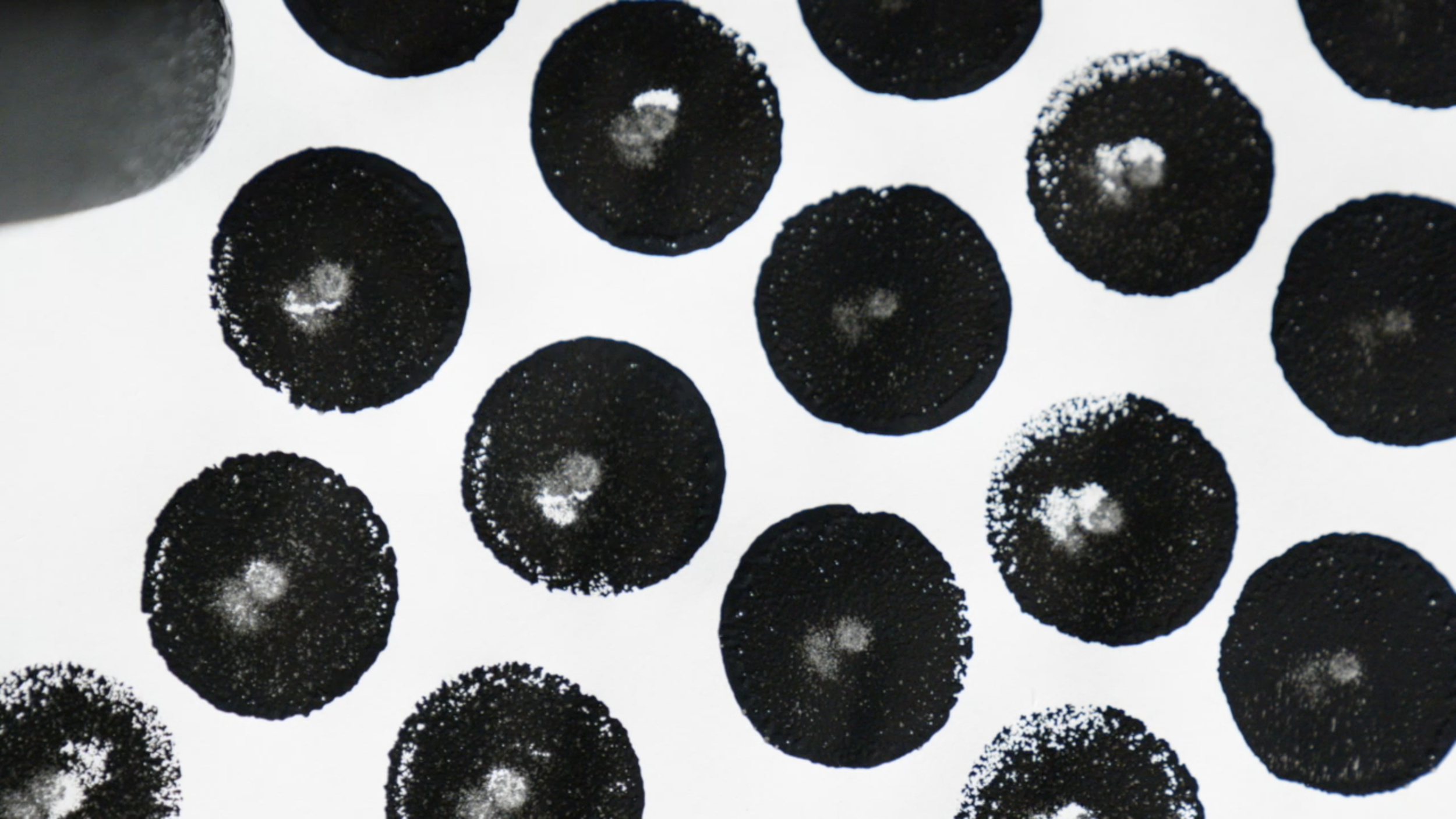
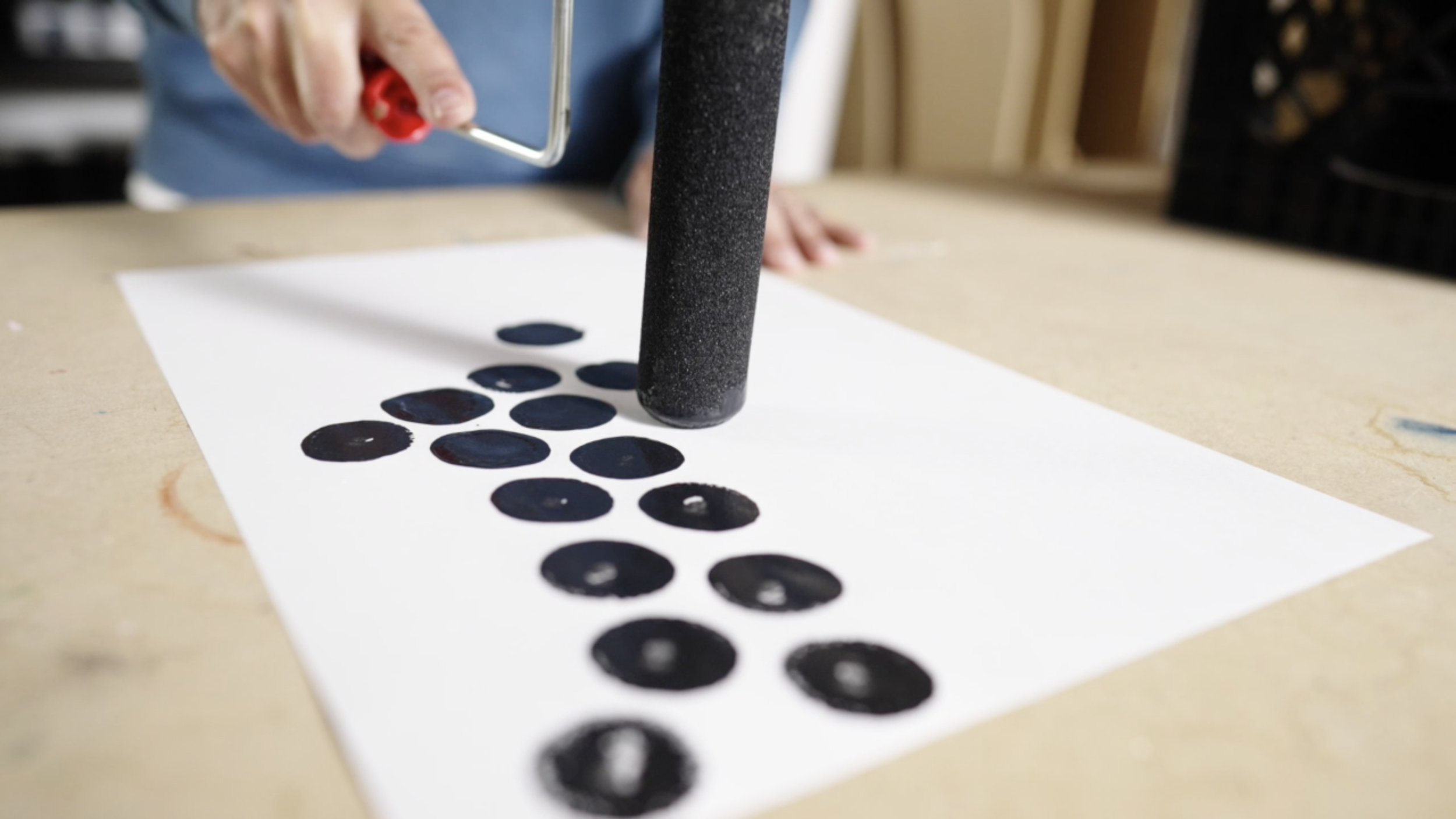
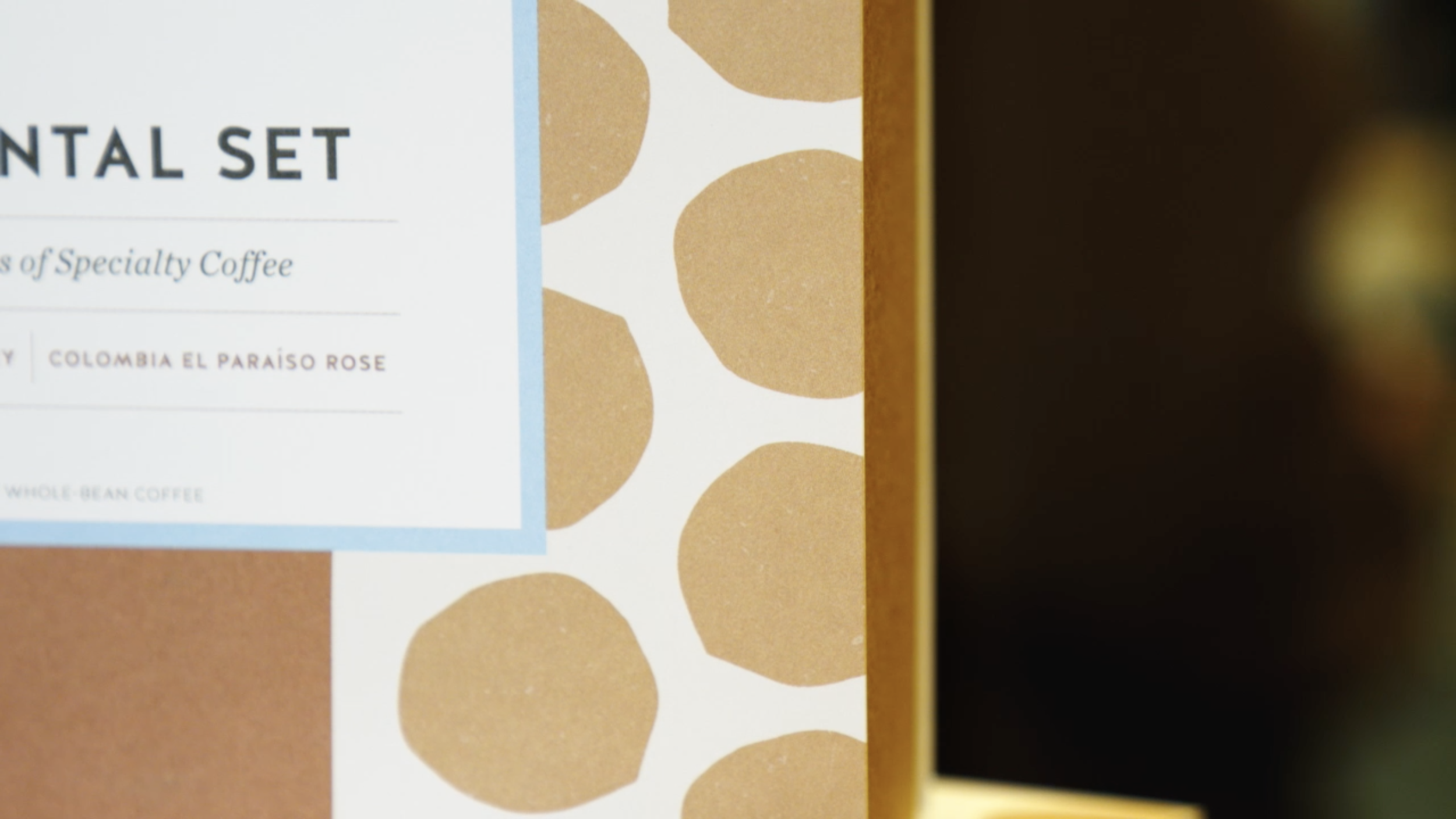

Playing with Textures
But these evocative shapes are just a piece of the tactility Cody brings to his art.
I start with shapes and I let it evolve. If the composition doesn’t make sense, we keep going. I start asking questions. What happens if we expand it, add color, create a pattern? I wouldn’t classify my art as theoretical. I never want it to be too deep. I want a more visceral experience. I want you to feel the art.
Cody’s exploration of textures feels more like free play than regimented work. In the studio, we watched him take a paint roller and roll out swatches of different textures. Then he flipped it on its end and laid out entirely new patterns that reinvented the tool’s purpose.
I wanted to add in images of coffee—the bean, the leaf—that live in nature and turn them into textures and patterns. Sometimes it’s as simple as adding in a different shade of blue, like we did here. The different hues interact with each other and complement the natural notes in a way I wouldn’t have discovered without being pushed outside my own sense of color in this collaboration.
Just like how collaborations reshape your idea of a subject, I had to break through my own self-constructed ideas about what a painter is vs a designer vs an artist. I always thought painting was art and design was work. It wasn’t until I dropped these boundaries and allowed myself to meld my passions that my most authentic self took form in my creations.
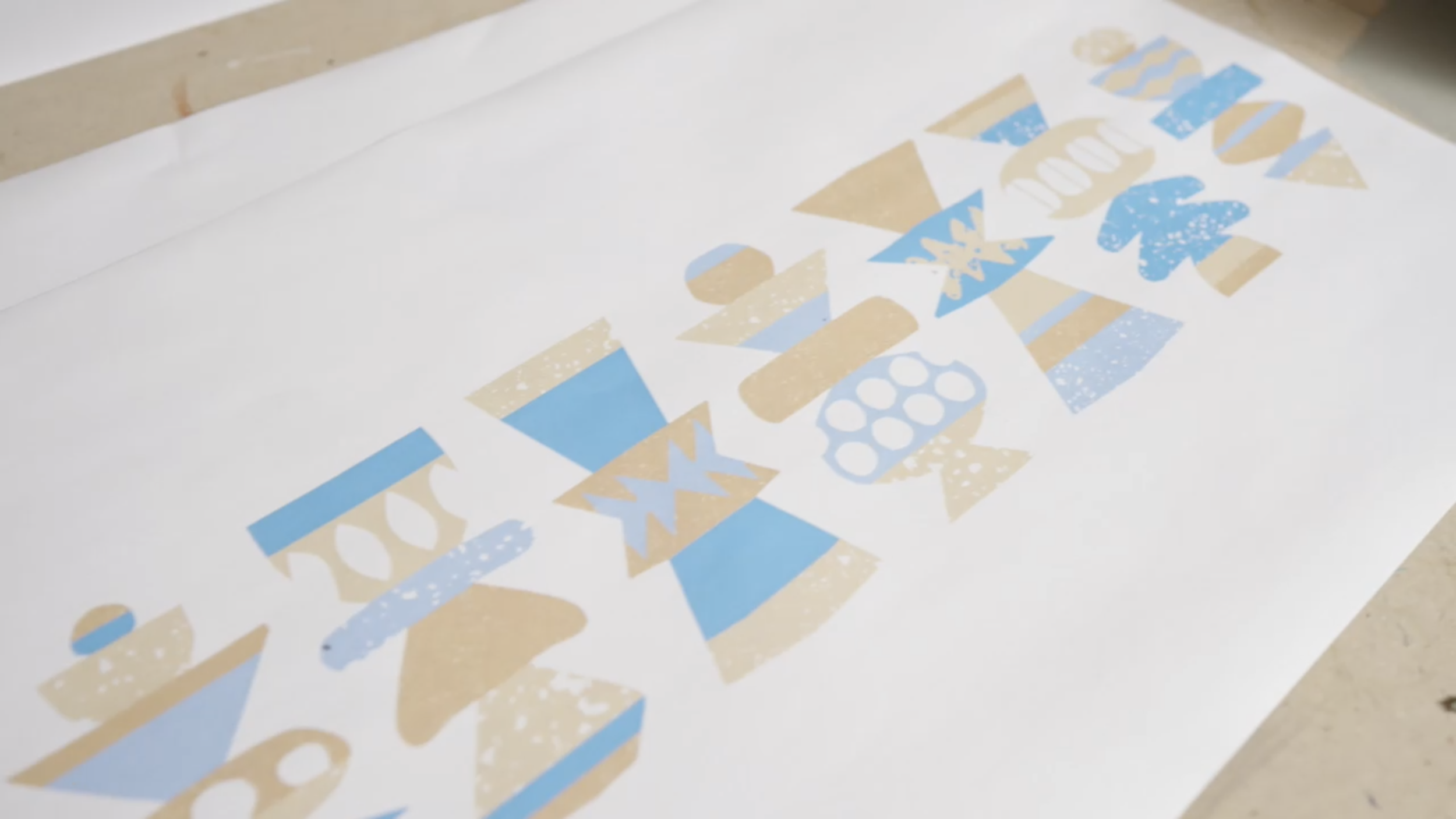

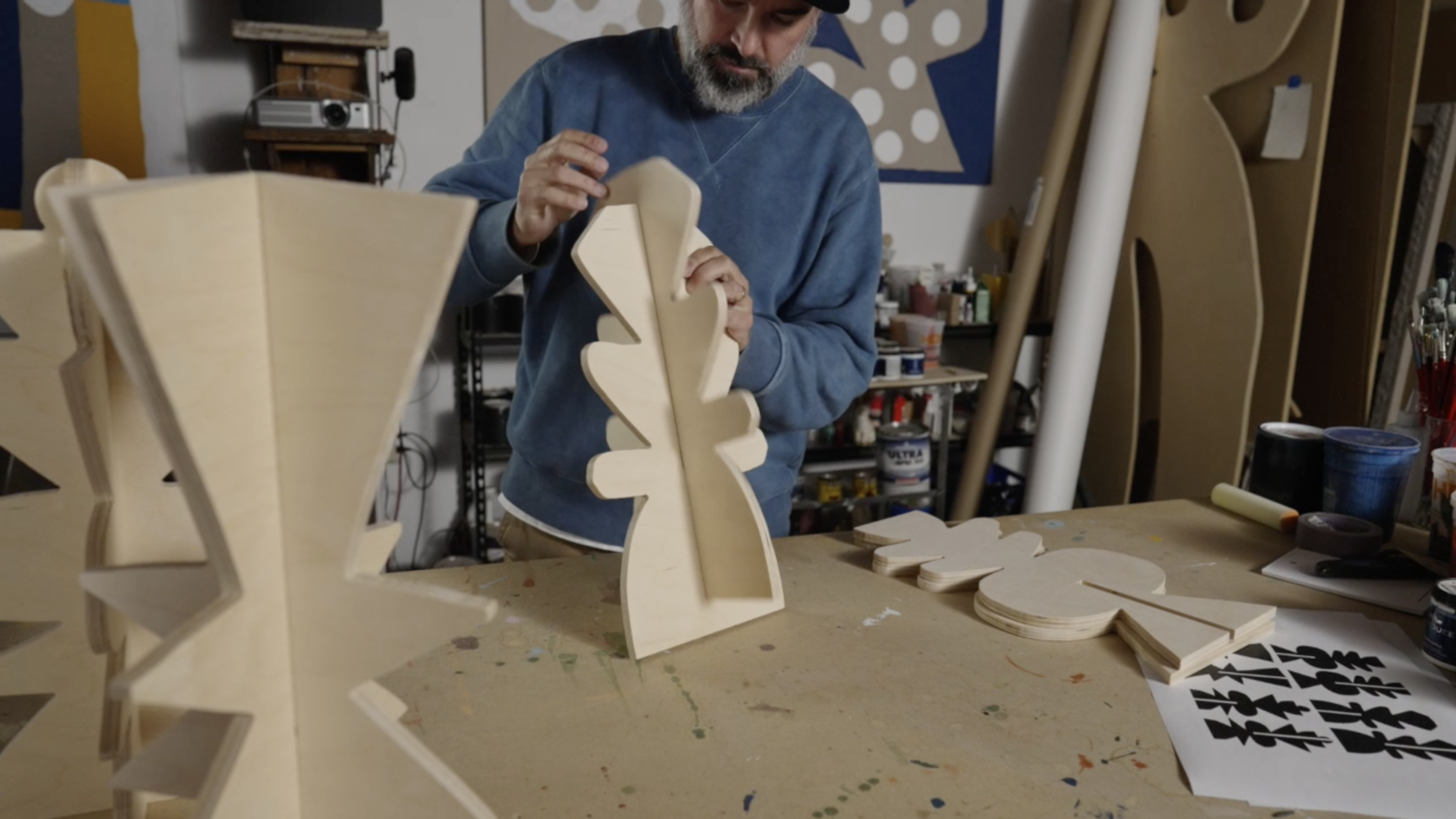
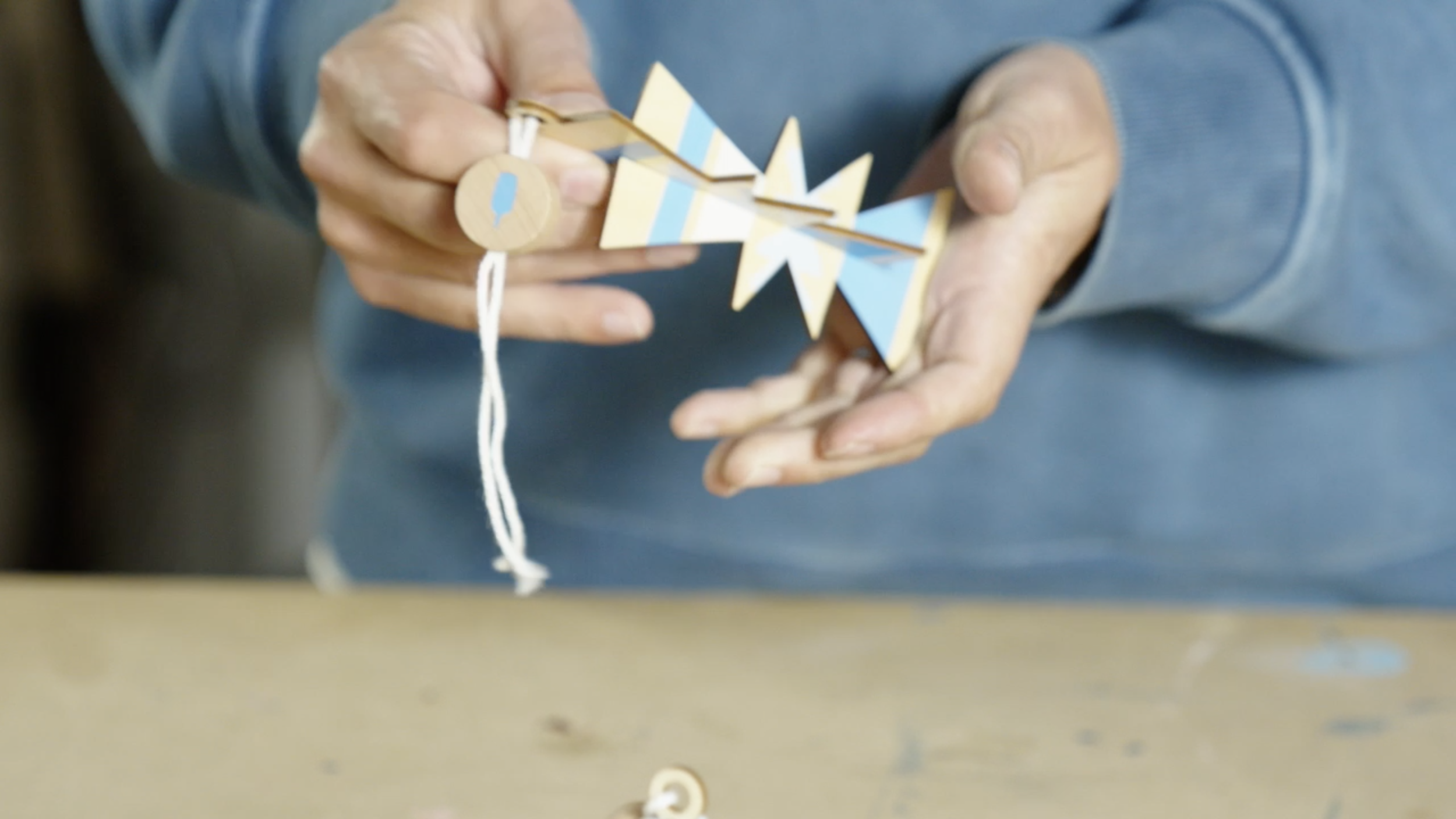
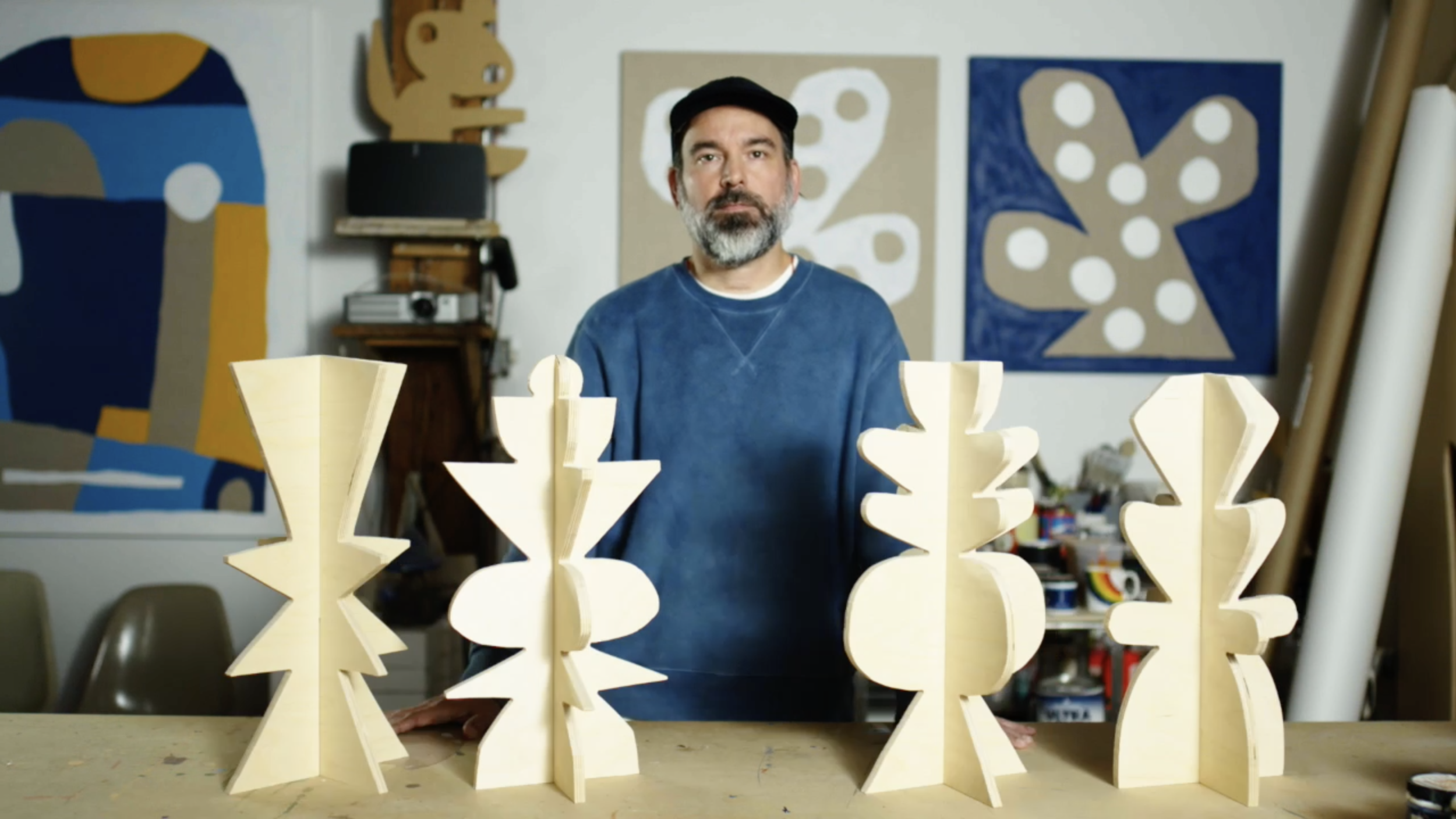
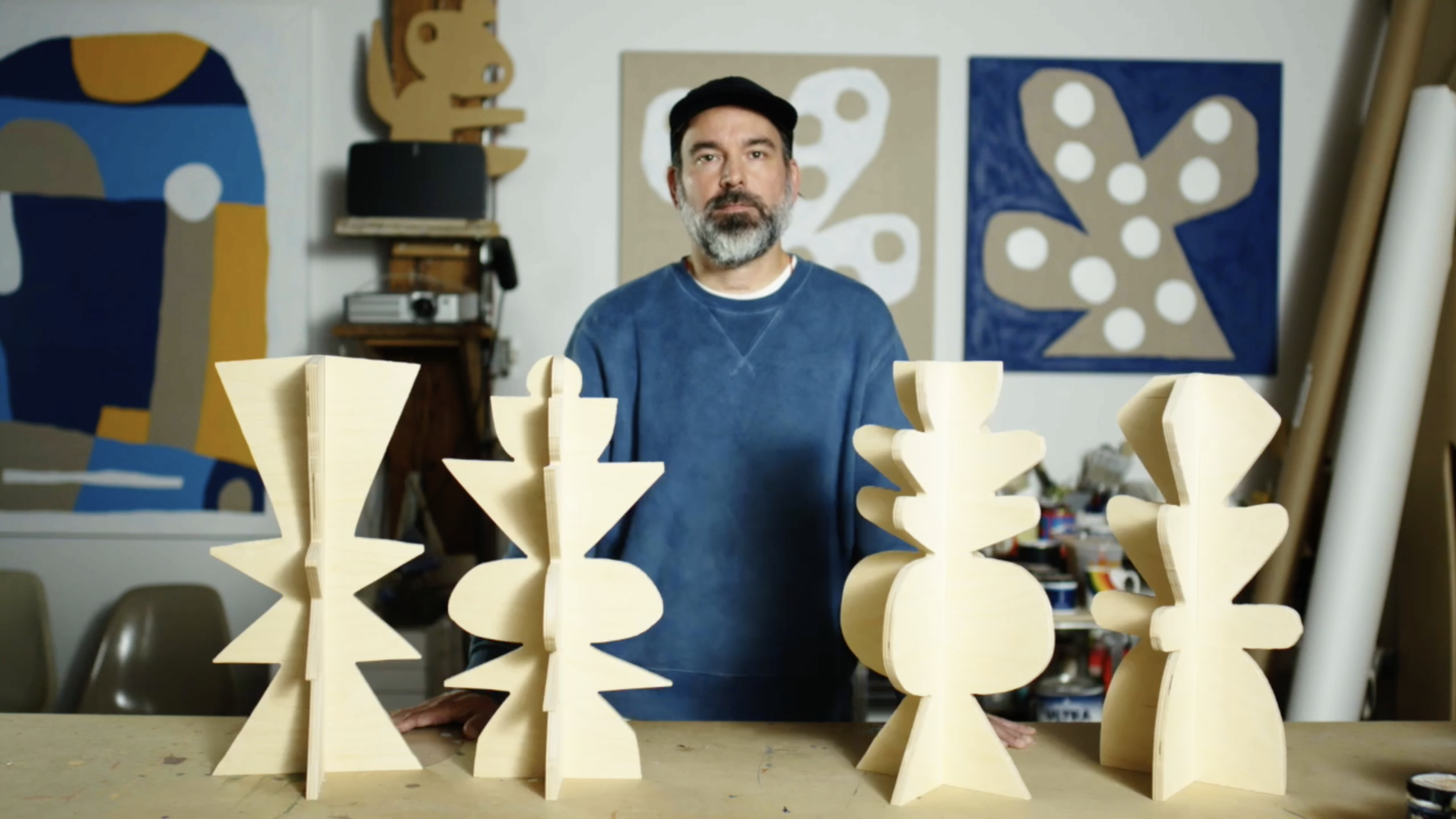
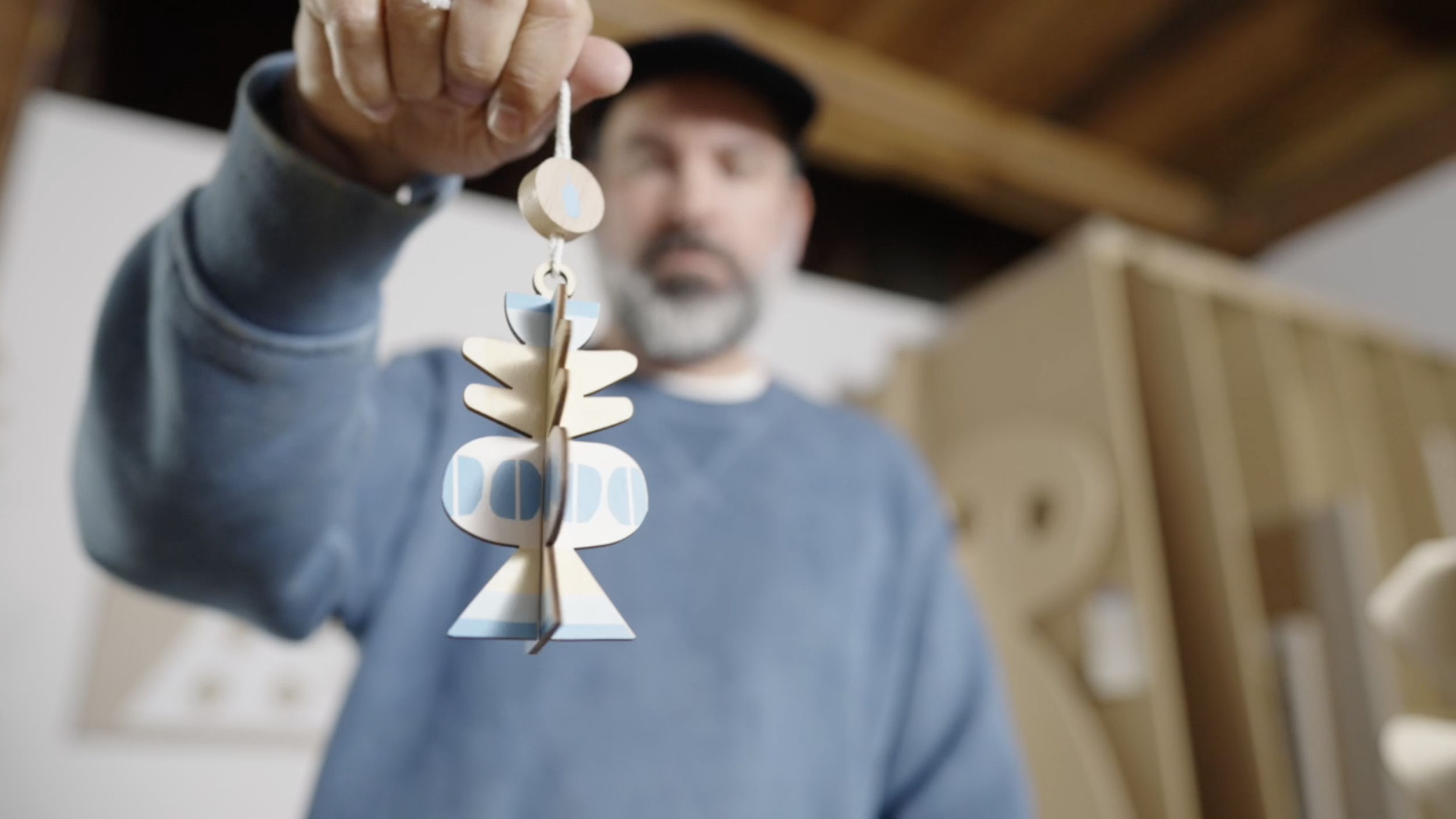

Bringing It to Life
In the end, it’s his technique that shows through in the final pieces—the hand-cut edges, the textures born from innovation, the shapes that hold each other.
It was a process. We started with very traditional holiday ornaments, and we knew it didn’t work. So, I leaned into my instincts and started cutting shapes, stacking them, letting them interact, and bringing in elements of coffee. Then it felt like the stacks were becoming objects, and different areas became more interesting than others. So, we focused on those while reworking other sections. We added different patterns, texture, and colors until they came to life in these 3D objects.
I wanted the ornaments and designs to feel holiday-like without falling into traditional holiday visuals and elements. I wanted the feeling of the holidays without the icons that tell you it’s the holidays, and I think it comes through in the shapes and colors. I hope these designs just give people that warm feeling. That’s all you can hope for in your art.
